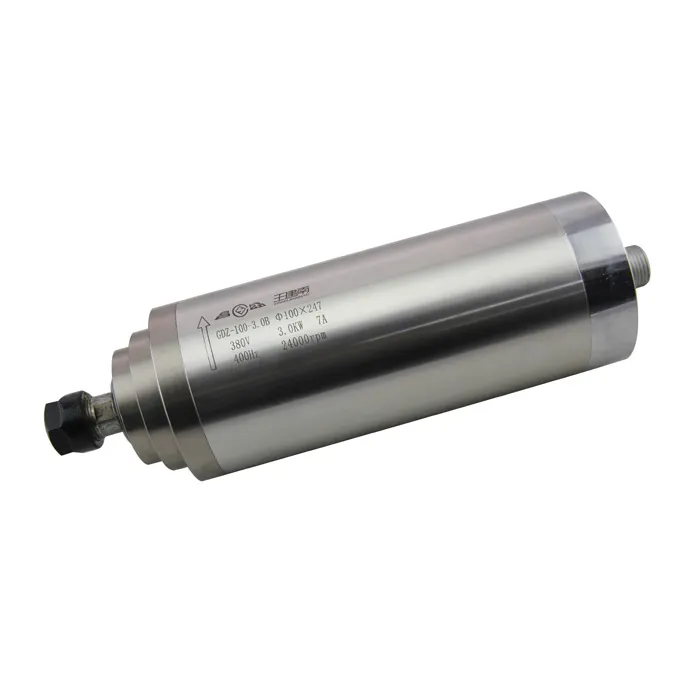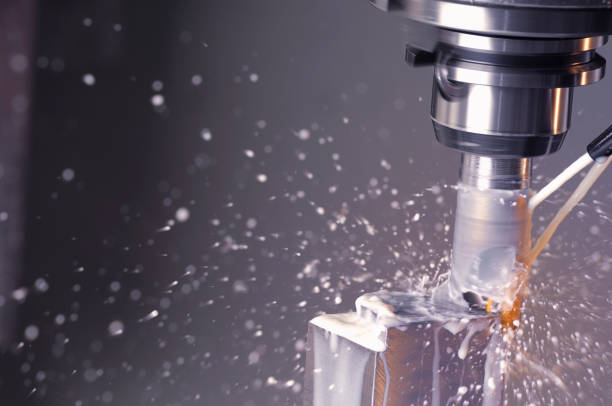Pricing CNC work is one of the most important aspects of running a successful CNC machining business. Whether you’re a seasoned CNC operator or a beginner just stepping into the world of CNC machining, understanding how to accurately price your services is crucial to sustaining profitability while staying competitive in the market. This guide will break down the entire pricing process, from understanding your costs to factoring in labor, overhead, and profit margins, helping you navigate the complex world of CNC pricing confidently.
The Importance of Proper CNC Pricing
Pricing your CNC work appropriately is about more than just covering your expenses; it’s about ensuring profitability, competitiveness, and business growth. An accurate pricing model helps maintain customer satisfaction while making sure your business stays financially healthy.
If you underprice, you might win a few contracts, but the resulting thin margins can lead to financial stress, inability to invest in equipment, or even business closure. Conversely, overpricing may drive away potential customers, causing you to lose out on valuable work. Thus, finding the perfect pricing balance is crucial.
To properly price CNC work, you need to account for multiple factors like material costs, machining time, labor, overhead expenses, profit margin, and more. This ensures you charge enough to cover all costs while making a reasonable profit. Let’s dive into the various components that help determine the price.
Key Elements to Consider When Pricing CNC Work
1. Material Costs
The first step in pricing CNC work is determining the cost of the raw materials. This could include various metals, plastics, wood, or composites, depending on the job requirements. Material cost is typically calculated based on the type and amount of material used.
- Metal: Metals like aluminum, stainless steel, and titanium are commonly used in CNC machining. The cost of these materials can vary significantly based on factors like alloy type and supply conditions.
- Plastics and Composites: Materials like Delrin, polycarbonate, and carbon fiber have different cost profiles. For example, Delrin can be cost-effective, while carbon fiber might come with a premium.
You should calculate the price per unit (kg or meter) of the material and then multiply it by the amount used in the project. Be sure to include wastage since CNC machining often involves subtractive processes that generate waste.
2. Machining Time
Another significant factor in determining the price of CNC work is machining time. The cost per machine hour is influenced by the type of machine and the complexity of the task. For instance, 5-axis CNC machining will be more expensive per hour compared to a 3-axis machine because of its advanced capabilities.
- Cycle Time: Measure how long it takes to complete a part. This is known as the cycle time, and it directly affects how much you should charge. Longer cycle times result in higher costs.
- Machine Rates: Different machines have different hourly rates based on their capabilities, maintenance costs, and depreciation. For example, high-speed spindle motors like those featured on CNC Spindle Motors are used to ensure precision and efficiency, contributing to the machine’s overall hourly rate.
3. Labor Costs
Labor cost is the amount paid to machine operators, programmers, and other staff directly involved in producing CNC parts. It’s important to estimate how many hours your employees will spend on tasks like programming, setup, and operation.
- Programming: This includes designing the part and programming the CNC machine to execute it. Complex parts may take longer to program.
- Setup Time: The time required to prepare the machine, set up the tools, and load the program.
- Supervision and Maintenance: During the machining process, operators need to monitor machines, replace tools, and ensure the part is being machined correctly. This supervision time is also part of the labor cost.
4. Overhead Costs
Overhead costs are all other costs that come from running your CNC shop, such as utilities, rent, machinery maintenance, administrative expenses, and software licensing. Calculating overhead can be tricky, but it’s an essential aspect of pricing CNC work properly.
A general rule is to allocate a percentage of overhead costs to each job based on the amount of time and resources the job consumes. Precision spindle motors require regular maintenance and energy supply, and these costs must be captured in overhead.
5. Tooling and Consumables
Tooling costs, including cutting tools, end mills, and drills, must also be factored into the overall pricing. Tool wear can vary depending on the material being machined. Harder materials can lead to increased tool wear, requiring replacements more frequently.
Some tooling costs might be spread across multiple jobs, but others will be exclusive to a particular project. Ensure your pricing model includes a fair estimation of these costs.
6. Profit Margin
No pricing strategy is complete without a reasonable profit margin. After you’ve accounted for all costs, adding a profit margin ensures your business remains sustainable and continues to grow. Standard profit margins in CNC machining typically range from 10-30% based on market conditions, business goals, and competitive analysis.
- Market Factors: The demand for CNC work and the competition in your area can influence the profit margin. In a highly competitive market, you may need to keep margins lower to secure more business.
- Client Type: Offering volume discounts to clients who bring in bulk orders can help maintain steady business while still ensuring profitability.
7. Job Complexity
Complex parts require more programming time, specialized tooling, and often more machining time, increasing the overall cost. Factors like intricate geometries, tight tolerances, or unique material requirements will drive up the price.
If the part requires multi-axis CNC machining, it will increase the machine time and cost, but it might reduce other factors like setup time. Calculating these carefully helps keep the quote accurate.
Creating a Pricing Table for CNC Work
Using tables is a great way to provide clear pricing breakdowns for your clients. Here’s an example of how you might break down the cost of a CNC machining job:
| Cost Component | Details | Estimated Cost (USD) |
|---|---|---|
| Material | Aluminum, 3 kg | $45.00 |
| Machine Time | 5-axis CNC, 3 hours @ $80/hr | $240.00 |
| Labor | Programming and setup, 2 hours | $70.00 |
| Tooling | End mill (shared use) | $15.00 |
| Overhead | Utilities, rent, maintenance | $50.00 |
| Profit Margin (20%) | $84.00 | |
| Total Cost | $504.00 |
Providing a detailed breakdown like this helps clients understand what they are paying for and builds transparency, which can lead to increased trust and client loyalty.
Common Pricing Strategies in CNC Machining
1. Cost-Plus Pricing
The cost-plus pricing method involves calculating all costs associated with the job and then adding a predetermined profit margin. This is the most straightforward pricing model and ensures that all costs are covered while generating profit. For example, if your total costs are $300, you might add a 20% profit margin to set the price at $360.
2. Market-Based Pricing
Market-based pricing means setting your prices based on what competitors are charging for similar work. This method requires extensive research to understand the rates being offered by CNC machining businesses within your area. However, this strategy can be challenging since you may not know all the factors that competitors consider in their pricing.
Market-based pricing can help ensure you’re competitive, but it also requires careful balancing to avoid underpricing your services, which can jeopardize your business’s financial health.
3. Value-Based Pricing
With value-based pricing, you price your work based on the perceived value to the customer rather than the direct costs. For instance, a CNC-machined prototype that is critical for a new product launch may be worth more to a client than a regular bulk order.
Value-based pricing works well when you offer high precision, unique capabilities, or expertise that other CNC shops may not have. Clients may be willing to pay more for the expertise, high-quality equipment, or efficient turnaround times you provide.
4. Tiered Pricing for Different Clients
You may also adopt tiered pricing based on different client profiles. Offering lower rates for repeat clients or bulk orders can ensure a steady workflow, while first-time or one-off projects might carry higher rates to cover onboarding costs and additional time spent on consultation.
Internal Resources and Tools
To enhance your CNC machining efficiency and ultimately reduce costs, consider using high-quality CNC spindle motors and accessories. For more information on various spindle motors, explore the following resources:
- CNC Spindle Motors – Learn about different types of spindle motors and find the right one for your machine.
- 2.2KW ER20 Air-Cooled Spindle – An overview of a popular air-cooled spindle ideal for CNC routing applications.
- 24000RPM 3KW ER20 Water-Cooling Spindle – A high-performance water-cooled spindle suitable for advanced CNC operations.

FAQs
1. What is the best pricing strategy for CNC work?
The best pricing strategy depends on your business goals and market conditions. Cost-plus pricing is straightforward, while value-based pricing may yield higher profits if your clients see the added value in your services.
2. How do I calculate the machining time for a CNC job?
Machining time depends on factors like cycle time, machine capabilities, and the complexity of the part. You can use CNC software simulations to estimate the cycle time accurately.
3. Should I charge more for complex CNC parts?
Yes, complex CNC parts typically require more programming, specialized tools, and longer machining times, which should be reflected in the pricing.
4. How much profit margin should I aim for?
The typical profit margin in CNC machining ranges between 10-30%, depending on competition, client relationships, and market conditions.
5. What factors influence CNC pricing the most?
The most significant factors include material cost, machine time, labor, overhead, tooling, and profit margin. Each of these plays a crucial role in determining the final price.
6. How can I reduce overhead costs in CNC machining?
Investing in efficient spindle motors, maintaining your equipment regularly, and optimizing workflows can help reduce overhead costs in CNC machining.
Conclusion
Accurately pricing CNC work is crucial for running a profitable machining business. From material and machining costs to labor, overhead, and profit margin, every element needs to be carefully analyzed to ensure you are competitive and profitable. Different pricing models like cost-plus, market-based, or value-based can be used depending on the specific business environment and client base. Understanding these aspects and applying a fair, well-thought-out pricing structure will not only help you sustain your business but also grow it successfully in a competitive landscape.
For more guidance on CNC machining equipment, spindle motors, and enhancing your CNC operations, visit spindlemotorshop.com for reliable tools and expert advice.

